#Philvocs
Explore tagged Tumblr posts
Text
At least 14 strong earthquakes, including a 6.8 magnitude quake, struck the province of Surigao del Sur from 10:35 p.m. on Sunday to 6:00 a.m. this Monday, according to Phivolcs.
Most of which were recorded as aftershocks of the 7.4 magnitude quake that rocked the province on Saturday, December 2.
#LindolPH #EarthquakePH
#EarthquakeSurigaoDelSur
instagram
0 notes
Text
ONE DAY TRIP IN GREENS⛰️
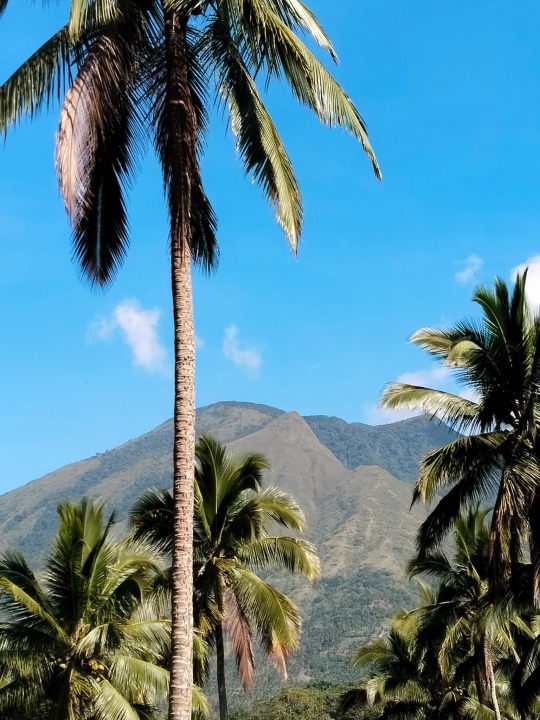

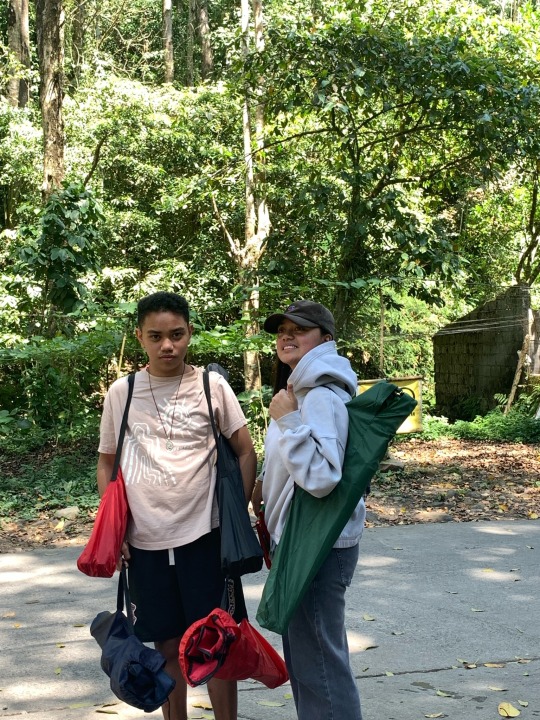
Hi everyone! I'm back with my mini blogs here in Tumblr hehe...
So for my first entry for this month of March is all about our very spontaneous trip. My family and I went to a province in the Philippines. It was actually just a quick trip that we decided (literally my parents just told us that we were going to visit our province, little did me and my siblings knew that they were implying to our province somewhere in Laguna).
YEP! We visited our lolo's house in Banahaw, and yes it's near Mount Banahaw and Mt. Cristobal. It's located in the province of Laguna/Quezon.
Interesting fact: Mt. Banahaw is an active volcano that has erupted three times, and its last eruption happened in 1843 according to PHILVOCS. As of today, it is a popular destination for hikers. Most especially during Holy week since it is known for being the "Holy Mountain in the Philippines". 🤓
After we visited the house, we decided to stay near the river side, and mind you, the water was way waaay too cold LMAO.. Supposedly, I was gonna go for a swim but I couldn't because of the temp jskdhkshd.. We bought some snacks from the sari-sari store, but if you are planning to come and camp for a few days, it is recommended to bring foods and drinks. (yes, camping is allowed, just don't forget to clean everything before you go!!) Anw, after staying for almost 5 hours, we went straight home and grab a meal in Jollibee drive through 🍗
People in the community are very conservative. They make sure that everything are well taken care of. So the least thing that we, as visitors/tourists can do is to respect their community by basically obeying their rules towards their lovely place. 💚
0 notes
Text
Honoring the Diwata that lives in a Volcano
As of this writing, Mayon Volcano is still at unrest making to Flag Alert Level 3 over Mayon Volcano which means that it is currently in a High Level of unrest as Magma is at the crater and hazardous eruption within weeks or days are possible according to Philippine Institute of Volcanology and Seismology (Philvocs) official, and there are 17, 941 people or 5,016 families that are evacuated into…

View On WordPress
0 notes
Text

According to Philvocs Taal Volcano is now on Alert Level 4.
13 notes
·
View notes
Text
Is your community prepared?: Community Involvement in Disaster Risk Reduction and Management
As someone living in one of the communities that make up one of the vast metropolises that continue to thrive economically, Quezon City deems urban resilience a vital aspect and social and economic concern in strengthening the city’s resilience. Where families and households are strong enough to withstand calamities and are also able to restore economic activity amidst the myriad of disasters.
To better visualize the overall purpose of this blog post, I would like to first share the economic and environmental issues the Philippines is currently facing.
Due to the geographic and physical features and location of the country, it is considered to be one most disaster-prone countries in the world. Situated along the western segment of the Pacific Ring of Fire, it lies in one of the most active part of the Earth characterized by an ocean encircling belt of active volcanoes and earthquake generators. Together with twenty-two (22) active volcanoes and six (6) known fault lines, the Philippines also sits astride the typhoon belt. The major part of the country experiences annual torrential rains and thunderstorms from July to October, with about nineteen (19) typhoons entering the country’s area of responsibility in a year with eight (8) to nine (9) of them making landfall on the country’s soil. This does not only make the Philippines vulnerable to flooding, but also vulnerable to climate change.
Sea level rise is one of the best-known climate change’s many dangers. As humanity pollutes the atmosphere with toxic substances that destroys the atmosphere, the planet becomes warmer and warmer. Thus, ice sheets and glaciers melt and warming sea water expands and increases in volume of the world’s oceans. The pollution and continuous onslaught of environmentally-detrimental human activities has become one of the top contributors to this growing concern. Especially in urban areas like Metro Manila, one of the most obvious human activity that sets the ground for environmental degradation is poor waste management. Improper wastes disposal, inefficient waste collection, lack of disposal facilities and the sheer loss of basic human decency and discipline has resulted in becoming one of the greatest threats to country’s environment and public health.
After hearing all these things, what can we do? Well, as of course in true Filipino fashion. We overcome. In our classes in Disaster Risk Reduction Management (DRRM), the term “Resilient”, Filipino or English, is a source of contention and controversy. While resilience is a noble word, it is also subject to scrutiny as to what does it mean to the country’s ability to bring back the sense of normalcy and improving itself. It shouldn’t simply mean smiling whilst standing knee-deep in floods or accepting the fact that our country’s legal justice system will always be something out of a dystopian novel, or even going far back as to think, “well, if it’s not broken, don’t fix it” to the state of our transportation system. UNISDR (United Nations Office for Disaster Risk Reduction) defines resilience as “the use of recovery, rehabilitation, and reconstruction phases after a disaster to increase ‘resilience’ of nations and communities through integrating DRR measures into the restoration of physical infra and societal systems, and into revitalization of livelihoods, economies, and the environment.” In other words, we learn from the events for us to be “more resilient.” For us to improve. And how can we do that? We start in our most basic unit of society, the family, then to the community.
To take a closer look to the one the communities preparing for such disasters, I went to visit my local barangay, Barangay Bagumbuhay.
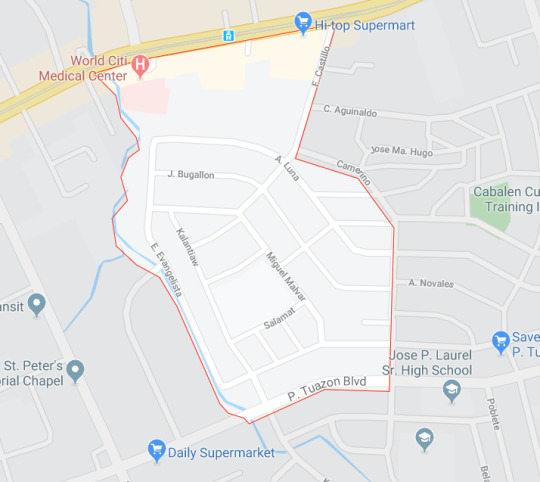
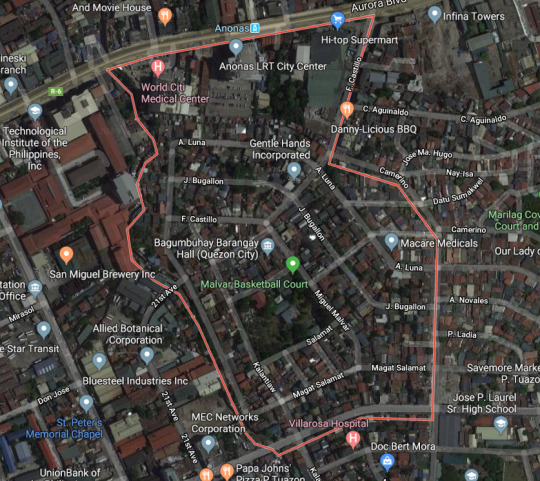
Barangay Bagumbuhay’s hall is right along the residential area of Miguel Malvar Street. Easily accessible by the Light Railway Transit (LRT) System (though it is currently closed for operations) or by jeeps coming from Cubao or Katipunan, going through Aurora boulevard.
Due to the location of the barangay, not a lot of natural hazards were identified. According to PHILVOC’s faultfinder, the barangay is approximately 1.6 km. from the nearest active fault trace, which is the West Valley Fault.
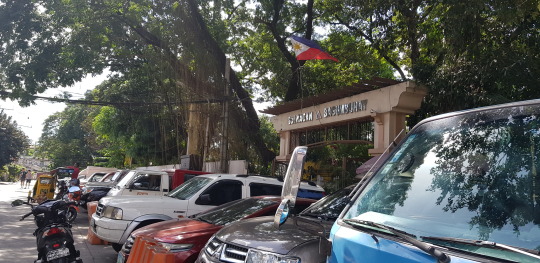
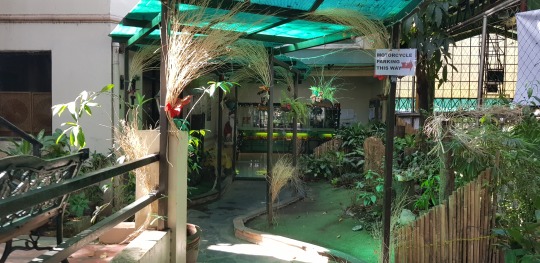
The barangay also had an advantage of being located right on top of a hill-like landmass, giving it the ability to rule out severe cases of flooding. However, there were still hazards to the community that were present. Namely, Anthropogenic hazards which were the structures and residential areas that were violating building code. Particularly the residential areas that were built atop the creek along F. Castillo Street. The officials fear that if these structures weren’t fixed immediately, they may become a danger to the residents should an offshoot of a disaster happened (e.g. fires). Blocked roads and alleys were also a danger since they served as a blockage to the entry and exit of residents to and from their homes, making it difficult for them to move through.
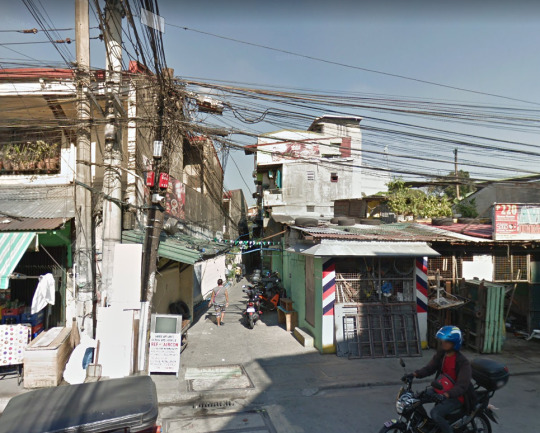
The officer in charge of the Disaster Risk Reduction and Management office of barangay Bagumbuhay, Estiño Martinez, introduced me to the various DRRM plans they had prepared in case the community faced a disaster. There were plans of evacuation locations for the nearby residents as well of those people who need special care and attention. Sr. Martinez provided a list of projects that had already been done and to be done (for 2020) in order to fulfill their duty of reducing the risk of any hazards that pose a threat to the community.
Sr. Martinez accompanied us in viewing the various preparations the had in store. For medical emergencies, for fire accidents, as well as for the aftermath of any disaster.

The multipurpose court to be used as an evacuation center for the community.
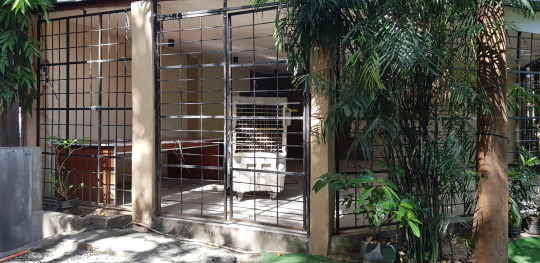
A funeral parlor and holding area for the families who are cannot afford the expenses of having a proper burial for their family member.
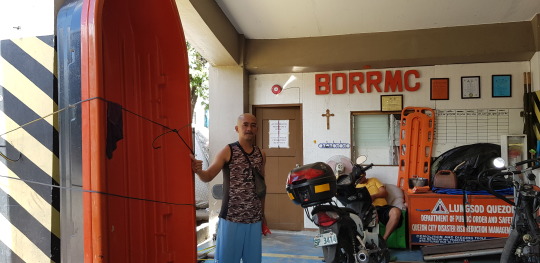
A Barangay Disaster Risk Reduction and Management Center right behind the hall. This includes the various materials and equipment to be used if in case of an emergency.

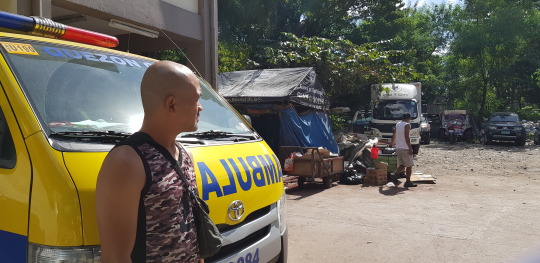
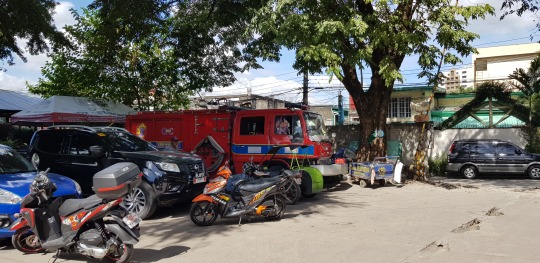
The fully-equipped ambulance and fire truck on stand-by 24-7. Sir. Martinez also informed us that the people manning these vehicles were always on site. He told us that they had shiftings in place for these positions as to prevent lacking important personnel if and when needed.
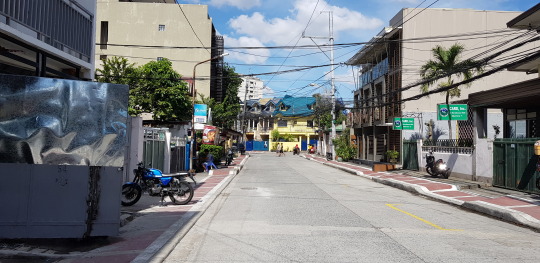
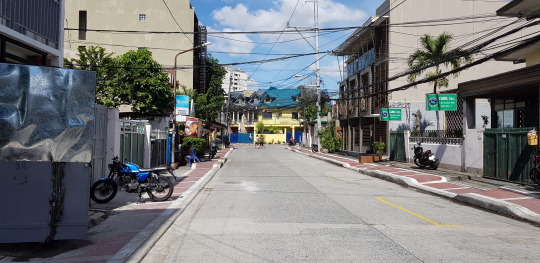
The barangay council also set forth a clearing operation for the entire Miguel Malvar Street. This was to prevent blockage or traffic for the emergency vehicles going in and out of the barangay hall area.
When I asked about the issues that the barangay faced in implementing their plans, he told us how sometimes there were residents who refused to take part in an operation they called Ugnayan. This system allowed residents to be informed of the basic and immediate reparations should a disaster ever happen. Seminars and workshops going on in the barangay is also openly given and provided to the residents. Sr. Martinez explained to us how participation of all the individual members of the community is what will ultimately help the community, not just the barangay personnel. The interview was then abruptly cut due to the schedules Sir. Martinez had.
Though our time was short, he was able to answer all my questions and expound on his answers in a concise manner. I am extremely grateful to Sir Martinez for giving me his time in answering all my questions.
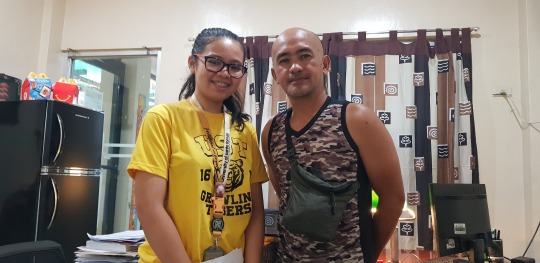
The interview led me to many conclusions about how vital it is for a community to be prepared for such disasters. In case of any disaster or emergency, before any government relief & support reaches or outside help is utilized, it is the Community which has to respond immediately (at the hour). As the Community plays the role of First Responder, it is critical that there is adequate awareness and preparedness at the Community level especially among the most vulnerable set of communities residing in the most vulnerable areas.
Disaster preparedness provides a platform to organize effective, realistic and coordinated planning, reduces the waste of efforts and increase the overall effectiveness of the individual, household and community members disaster preparedness and response efforts. Disaster preparedness activities that are planned with risk reduction measures can prevent disaster situations and also result in saving maximum lives and livelihoods during any disaster situation, enabling the affected community to easily get back on its feet within a short period of time. Community preparedness can be thought of as the advance capacity of a community to respond to the consequences of an adverse event by having plans in place so that people know what to do and where to go if a warning is issued or a hazard is observed.
What we plan with our families, our community, and in our country helps us consider our emergency response activities in light of existing and new disaster risks that is affecting us and our country. This allows us to design or adjust our activities so that people and communities and in the end, our country to become safer and more disaster-resilient, as well as safeguarding efforts to create and expand enabling conditions for sustainable poverty alleviation and development. This can help strengthen our communities and reduce our vulnerability to the multiple natural disasters heading our way.
The best way we can do to help our community and our country is to raise awareness. People being informed and equipped with the right knowledge will go a very long way. Just as the saying goes, it is better to know it and not need it than to need it and not know it.
We as a community must urge our those we have elected to government positions to quickly move in planning and developing projects that will protect the public. We must build resilience in ourselves and also in the systems of our society. We must approach climate change with fear, for what our children’s future will be, and courage and hope, that we can heal what has been done.
To our public officials, they must create and support national policies and strategies allocating the resources of the country to manage the risk threatening it. Everyone must help in pushing for change and improvement in access to quality primary health care even before disaster strikes.
To our workforce, we must be trained and equipped in planning for all types of emergencies. We need to be able to identify hazards, vulnerabilities, and our own capacities to lessen risks.
To the public, we as collective need to promote risk awareness of emergencies as well as providing health education to the youth. There is so much we can do when we join together for a cause that will protect us and our families.
True “resilience”, I believe, is not tolerance or ignorance of the system that is broken in the front of adversity. It is the triumphant improvement of ourselves, physically and socially to become better. A better Filipino nation that faces calamities not in a defeatist manner but with a strength of Filipinos coming together.
#text#text post#nstp#literary training service#barangay#disaster risk reduction and management#drrm#philippines#blog post
6 notes
·
View notes
Photo

#Earthquake Philippine Institute of Volcanology and Seismology reports a magnitude 5.4 quake hit 7km west of Tingloy, Batangas at 8:58 p.m. tonight 4-April-2017 #quake #magnitude #philvocs #dost #Tingloy #Batangas #Philippines #miniphilippines #pekson
0 notes
Text
KWENTUHAN SA BARANGAY IBABA

Hi, I'm Thomas from C-COM 2 and welcome to my blog about Barangay Ibaba in my kwentuhan with one of our barangay officials.
Barangay Ibaba
Barangay Ibaba is one of the twenty one (21) barangays in Malabon City
HAZARD IDENTIFICATION:
1. Ano-ano ang mga kalamidad/hazards na tumama sa ating barangay?
"Siguro pangunahing kalamidad na kinakaharap natin ay ang malakas na mga pag-ulan o mga bagyo na nagdudulot na mataas na pagbaha sa pamayanan. At ang mga sunog na karaniwang nangyayare sa ating barangay dahil sa mga buhol buhol na kuryente sa poste at pagkaiwan ng mga saksak o kandila na nagdudulot ng sunog."
2. Ano ang iba pang mga panganib na nakaapekto ng matindi sa ating pamayanan?
"Yung lindol, kahit na wala pa naman naitayang mabigat na pinsala ang lindol sa ating barangay, ay isa ito sa pinaka mapanganib na kalamidad na magdudulot ng malaking kasiraan sa mga estraktura at kukuha ng mga buhay."
3. Paano nalalaman na may parating na bantang sakuna?
"Malalaman natin yan sa tulong ng mga eksperto tulad ng PAGASA at PHILVOCS na nagtatala at nagbabalita sa atin ng mga parating na kalamidad."
4. Gaano kadalas ito nangyayari sa ating pamayanan?
"Ang malalakas na bagyo ang madalas na nangyayari sa ating pamayanan, hindi lang sa ating barangay, pati narin sa buong bansa dahil nga sa pagdaan ng malalakas na mga bagyo, at naging karaniwan na sa atin ang suliranin na ito."
VULNERABILITY, ELEMENTS AND PEOPLE RISK ASSESSMENT
1. Saan ang may pinakamatinding mapipinsala? Bakit kaya ang mga lugar na ito ang may pinakamatindi ang pinsala?
"Sa mga lugar na mabababa, dikit dikit ang mga bahay, marumi, at walang paghahanda at disiplina."
2. Kung tumama ang mga bantang panganib, sinu-sino kaya sa ating lugar ang pinaka-maapektuhan? Bakit kaya sila ang pinakamaapektuhan?
"Pagdating sa pagbaha dulot ng malakas na ulan, pinakamaaapektuhan ang mga mamamayan sa mababang at maruruming lugar dahil vulnerable sila sa mga pagbaha dahil na rin sa mga baradong kanal. Pagdating naman sa sunog, pinakamaaapektuhan ang mga bahay na dikitdikit dahil gagapang ang apoy sa bawat bahay."
3. Ano kaya ang epekto ng pagtama ng sakuna sa mga tao, pangkabuhayan, serbisyong panlipunan at imprakstruktura ng pamayanan?
"Unang maaapektuhan nito ay yung kanilang mga tirahan at gamit dahil sa pinsalang nadudulot ng baha at sunog, at ang mga kalamidad na ito ay nakakasira sa kabuhayan ng mga mamamayan, lalo na sa mga nagtitinda."
4.Saan ang pinakaligtas na lugar sa pamayanan kung may bantang panganib na dumating?
"Meron tayong mga evacuation center para diyan at nagbibigay tulong at shelter din ang ibang mga eskwelahan, courts at mga barangay hall."
5. Saan naman ang pinakadelikado na lugar sa pamayanan kung may bantang panganib na dumating?
"Doon sa mga lugar na may poor housing o mga bahay na nasa dulo ng mga barangay at mga nahihirapan lumikas."
6. Anu-ano ang mga suliranin/problema na kinakaharap ng barangay na humahadlang sa pag-unlad ng pamayanan at pumipigil sa pagbangon mula sa pagkasalanta ng mga kalamidad?
"Isa ang disiplina, dahil sa mga katigasan ng ulo na hindi marunong mapanatiling malinis ang ating barangay na nagiging dahilan ng baradong mga kanal at mas mataas at mabilis na pagbaha, at sa mga jumper o nangingielam sa mga poste ng kuryente na nagdudulot ng pagsabog at sunog."
CAPACITY AND DISASTER MANAGEMENT ASSESSMENT
1. Ano-ano ang ginagawa ng pamayanan at barangay sa paghahanda/pag-iwas at kung sakaling may mga bantang panganib tulad ng bagyo, baha, lindol na dumating?
"Nagsasagawa kami ng mga pagtuturo sa mga tamang aksyon na gagawin sa oras ng kalamidad at ine-encourage natin ang mga mamamayan na maghanda ng mga SOS o sandata on sakuna."
2. Ano ang nilalaman ng plano ng barangay pagdating sa sakuna?
"Nilalaman nito ang mga evacuation plan sa oras ng kalamidad na maapektuhan ng malaking pinsala at mga response team na tutulong sa ating mga mamamayan. Nandito ren ang badyet sa mga kagamitang gagamitin sa oras ng sakuna. "
3. Sa kasalukuyan, anong programa, sistema, gamit, pasilidad o kakayahan meron ang barangay na makakatulong sa mga tao, serbisyo at kabuhayan na makabangon mula sa epekto ng kalamidad.
"Mayroong mga oportunidad katulad ng mga trabahong street sweepers at basurero na inaalok namin sa mga nangangailangan ng trabaho at panandaliang shelter para sa mga mabibiktima."
4. Sino ang mga taong namamahala sa paghanda, pagharap at pagtugon sa kalamidad?
"Ang mga kagawad at kapitan ng barangay ang nangunguna sa pagtulong ng mga nasalanta sa pamamaraan ng pagbibigay ng mga pagkain at iba pang mga tulong."
Hazardous Places



I consider these places hazardous because of the improper waste disposal which causes clogged canals that leads to higher and faster flooding, and the entangled wires and poor housing that will be dangerous if a fire occured.
Safe Places



I consider these places safe because of the shelters they offer during calamities thar provide evacuation sites for the victims, and clean roads that prevents further problems.

Best Practices
I consider as one of the best practices is the discipline of the people to follow rules and regulations that will benefit the community, and to pray always.
Reflection
During my interview with the barangay and the community walk, I saw the different problems in the community and the possible solutions that will solve these problems. And the realization of different series of calamities that might occur if we are not ready and prepared. And so I am enlightened and made aware about the different action plans to do under certain circumstances and the activities to prevent and minimize the casualties of these events.
Documentation


1 note
·
View note
Photo






LOCATION: Barangay 471 Zone 46 District IV, City of Manila
This is the barangay hall that is closest to me while I’m staying here at my dorm near University of Santo Tomas. There are new things that I have learned when I interviewed the barangay official that supervises their Barangay Disaster Risk Reduction Management. The community place is not perfect, this is the reason why there are calamities or hazards that may happen in our community.
The main calamities that might happen in the community is the Flood, Fire and Earthquake. Flood is common in the area of Manila, since the drainage is always getting clogged up by the trash of the people it can cause flooding in the area. Since the trashes is the main thing that causes the clog and also the one that causes the flood, the barangay is doing their weekly clean up drive and also the de-clogging of the drainage.
Since the PHILVOCS told us that the Big One (Earthquake) might happen in our lifetime, the community is preparing for this one, the barangay official told me that the University of Santo Tomas’ Field might be the best place to go when a calamity like this happened and it is also the nearest and safest place for me.
Our country is within the pacific ring of fire and that means a lot of storms might get in our country and it will be the cause of the flood on a certain parts of our country. Other places might be vulnerable in our country like our community which is always the drainage system gets clogged up because of the wastes of the people.
I have realized that things might not be easy for the barangay officials especially when they are handling the Disaster Risks Reduction and Management. A lot of observation and strategy is needed on how to make the place invulnerable to the calamities and disaster.
Philippines encounters so many disasters and calamities within the years because of the location of our country which is close to the pacific ring of fire, and we really need to resolve the issues containing these problems. We can address this issues by looking at the places that got hit by a certain typhoon and how much destruction does the typhoon did to a certain place, I think that this is enough for making other people notice that this issue is serious and we have to be always prepared for it.
As a student I can raise the awareness of the people of our country or community by making Advocacy of environmental awareness using advertisements. The actions that I will take is to study the things that a certain type of calamity or disaster did to a certain place and on how much destruction it cause to the place, and I will share this things to the people to make them aware. I will also give them some tips to avoid being a victim of a certain type of calamity or disaster.
1 note
·
View note
Text
“How can we know if there will be an incoming disaster?”
“ The MDDRMO from our municipality usually message people about announcements; storm signals, earthquakes, and also reminders of what to do. That is how we give the public sufficient knowledge of what is happening and what might happen”
“ Through social media, we announce suspensions, updates from PAG-ASA, PHILVOCS, and other DRRM related department in the government in order to keep our citizens prepared”
1 note
·
View note
Text
Daily Log 7/31/22
So last day for the month of July. It will be August tomorrow, which means only a few days before the start of classes. Just the thought of it is very frightening, but we have no choice. It's life.
So no update yesterday, I was sick. I forgot (I think) I'm not actually sure. But just in case I did, I was sick please spare me a little bit.
So my order of the little astronaut to perfectly light up my laptop at nights just arrived. I was testing it as I was typing this daily log and I think it was cute. It was smaller than I expected but it does serve its purpose. I hope it lasts me long.
So tomorrow is girlfriend day which means a lot of guys would be flexing their girlfriends and no one would flex me. That sucks.
My phone wallpaper today is Devon Aoki. She is so hot. I love her.
There is actually another aftershock earlier. I also read an article which mentions that the aftershocks may go on for a year according to PHILVOCS. It's sad and frightening, we expected it to go on for 2 - 3 days and now we expect it for a year. God, please protect us.
Been having an earworm lately and I keep on listening to Atlantis by Seafret. It's a very good song.
I actually read a lot of david levithan's everyday yesterday, I was so close to reading half of the book. Just a few more pages and I would have read half of it, but yeah I need to stop myself from reading lol. Just 'coz it would be bad for me.
That would be it for today.
XOXO
0 notes
Text
5.8 quake shakes Occidental Mindoro; no tsunami warning raise
The Philippine Institute of Volcanology and Seismology (PHILVOCS) reported a 5.8 magnitude earthquake that shook Occidental Mindoro, Wednesday morning, May 12. Identified as tectonic in nature, the trembling began at 9:09 am with a depth of 110 kilometers. According to PHILVOCS, the epicenter is located in the municipality of Abra de Ilog. Metro Manila also experienced tremors. In an interview…

View On WordPress
0 notes
Text
@anabsolutebrick replied to your photo “According to Philvocs Taal Volcano is now on Alert Level 4.”
Please take care of yourself and the family!
@ennn replied to your photo “According to Philvocs Taal Volcano is now on Alert Level 4.”
Stay safe D:
@theskyexists replied to your photo “According to Philvocs Taal Volcano is now on Alert Level 4.”
How close are you? :///
@thatgeeklover replied to your photo
DUDE INGAT
Thanks guys, so far just ash fall and watching the news. I wouldn’t say we live that close, but also: there is not enough distance between us and an active volcano rn.
9 notes
·
View notes
Text
I am going to play Korean online games again later. The last time I played I got mostly common loots again. I didn’t get the rare loot I wanted. I sold my common loots to an NPC and got a small bit of game currency.
There’s only three days more until a new Dragonball Super chapter comes out. Boruto will also release a chapter at the same time. I’m waiting for both manga to come out.
I think PHILVOCS said another earthquake happened but I did not feel it. Maybe I was asleep while the earthquake happened.
0 notes
Text
Magnitude 6.3 quake jolts Davao del Sur
#PHnews: Magnitude 6.3 quake jolts Davao del Sur
MANILA – A strong magnitude 6.3 quake jolted Davao del Sur Sunday, the Philippine Institute of Volcanology and Seismology (Phivolcs) reported.
The tectonic quake struck 6 kilometers (Km) southeast of Magsaysay around 12:22 p.m. It had a depth of 15 km.
Philvocs said Intensity V was felt in Kidapawan City.
The following instrumental intensities were also reported:
Intensity V -- Koronadal City, South Cotobato Intensity IV -- Alabel and Kiamba, Sarangani; General Santos City, South Cotabato Intensity II -- Cagayan de Oro and Gingoog, Misamis Oriental Intensity I --Cagayan de Oro, Misamis Oriental
Phivolcs said both aftershocks and damages are expected from the earthquake. (PNA)
***
References:
* Philippine News Agency. "Magnitude 6.3 quake jolts Davao del Sur." Philippine News Agency. https://www.pna.gov.ph/articles/1129903 (accessed February 07, 2021 at 09:15PM UTC+14).
* Philippine News Agency. "Magnitude 6.3 quake jolts Davao del Sur." Archive Today. https://archive.ph/?run=1&url=https://www.pna.gov.ph/articles/1129903 (archived).
0 notes
Photo

4th quake jolts Masbate | Inquirer News LEGAZPI CITY –– A 3.3-magnitude quake jolted Masbate province for the fourth time on Thursday, the Philippine Institute of Volcanology and Seismology (Philvocs) said. The Phivolcs’ instrument detec... https://trendingph.net/4th-quake-jolts-masbate-inquirer-news/?feed_id=9852&_unique_id=5fb641011d4b9 #4th #inquirer #jolts #masbate #news #philippinenews #philippinesnews #quake #trendingph
0 notes
Text
Nakakapinsalang mga Kalamidad
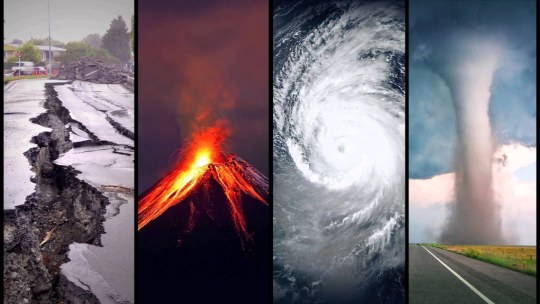
Ang mga kalamidad na ito ay napinsala ang iba’t ibang tao sa buong mundo noon pa man. Marami ang naging epekto ng mga ito sa buhay ng mga tao at sa bansa nito. Hindi rin maiiwasan na walang masasawi ang buhay at masusugatan kapag may kalamidad, ito ay dahilan ng kulang sa impormasyon at hindi handa ang mga tao sa paparating na sakuna.
Ano-ano nga ba ang naging epekto ng mga kalamidad na ito sa isang bansa? Sa mga naging karanasan ng bansa sa mga sakuna at kalamidad ay alam na nila sa susunod ang mga dapat nilang gawin o nagkaroon na sila ng mga ideya at kaalaman ukol sa paghahanda at pag-iwas sa kalamidad. Una, ipalaganap at ipakalat ang mga natatanging impormasyon ukol sa paparating na sakuna o kalamidad. Pangalawa, nag-iinvest ng pondo para sa mga kagamitan o gadgets at teknolohiya ang mga ahensiya na may kinalaman sa mga kalamidad tulad ng PAGASA, PHILVOCS. at NDRRMC upang mas mabilis at tama ang mga impormasyon at mga banta na kanilang maibibigay sa mga mamamayan. Pangatlo, pinaghahandaan din ng mga rescue team ang paparating na mga kalamidad sapagkat nasabi ko nga kanina na hindi maiiwasan ang mga sugatan at masasawi na mga buhay pagkatapos ng kalamidad kaya sila naghahanda upang tumulong sa mga nasalanta ng iba’t ibang kalamidad.
Isa pa sa naging epekto ng mga kalamidad sa isang bansa ay ang pagkasira ng mga estraktura, pampubliko o pampribado man ito. Syempre dahil dito kailangan ulit itong ipaggawa at pondohan ng gobyerno upang maayos ang iniwang pinsala ng kalamidad sa isang lugar. Mga halimbawa na lamang na mga nasirang estraktura ay ang mga kalsada, mga bahay ng mga mamamayan, mga pampublikong gusali at marami pang iba.
Ang mga naging epekto naman ng kalamidad sa mga tao na natamaan at napinsala nito ay nawalan ng mga tirahan at kagamitan, nasawi ang mga kamag-anak, sugatan at walang mapupuntahan. Isa ito sa mga dahilan kung bakit maraming tao na ngayon ang laging handa at alerto sa mga balita at banta sa mga paparating na kalamidad. Kaya naman maraming tao ang nagpapanic buying tuwing may sakuna, inihahanda ang mga first aid kits at lumilikas din ang ilang mga mamamayan sa evacuation center.
Isa sa mga naaambag ng mga tao sa pagdating ng isang kalamidad sa isang bansa ay ang pagpopost sa social media. Sa social media ay maraming makakakita at maaalerto sa kalamidad na paparating. Isa pa din dito ang mga news reporters kung saan sila ang nag-uulat ng mga balita ukol sa paparating na kalamidad. Isa pa ang radyo kung wala kang telebisyon kung saan may mga tagapagsalita sa radyo ang nagbabanta at nagkakalat ng impormasyon ukol sa kalamidad. Mga boluntaryo na rescue teams ay nakakatulong rin sapagkat hangarin nila na matulungan ang mga mapipinsala at napinsala ng kalamidad. Ang mga tao na nagbibigay ng mga donasyon ay nakakatulong rin at nakakaambag sa bansa tuwing may kalamidad dahil nakakatanggap ang mga napinsala na mga tao ng mga donasyon galing dito pati rin galing sa gobyerno. Bilang isang mamamayan ay dapat lagi tayong handa at alerto sa mga kalamidad na dadating sa ating bansa upang maiwasan ang mga buhay na nasasawi.
0 notes